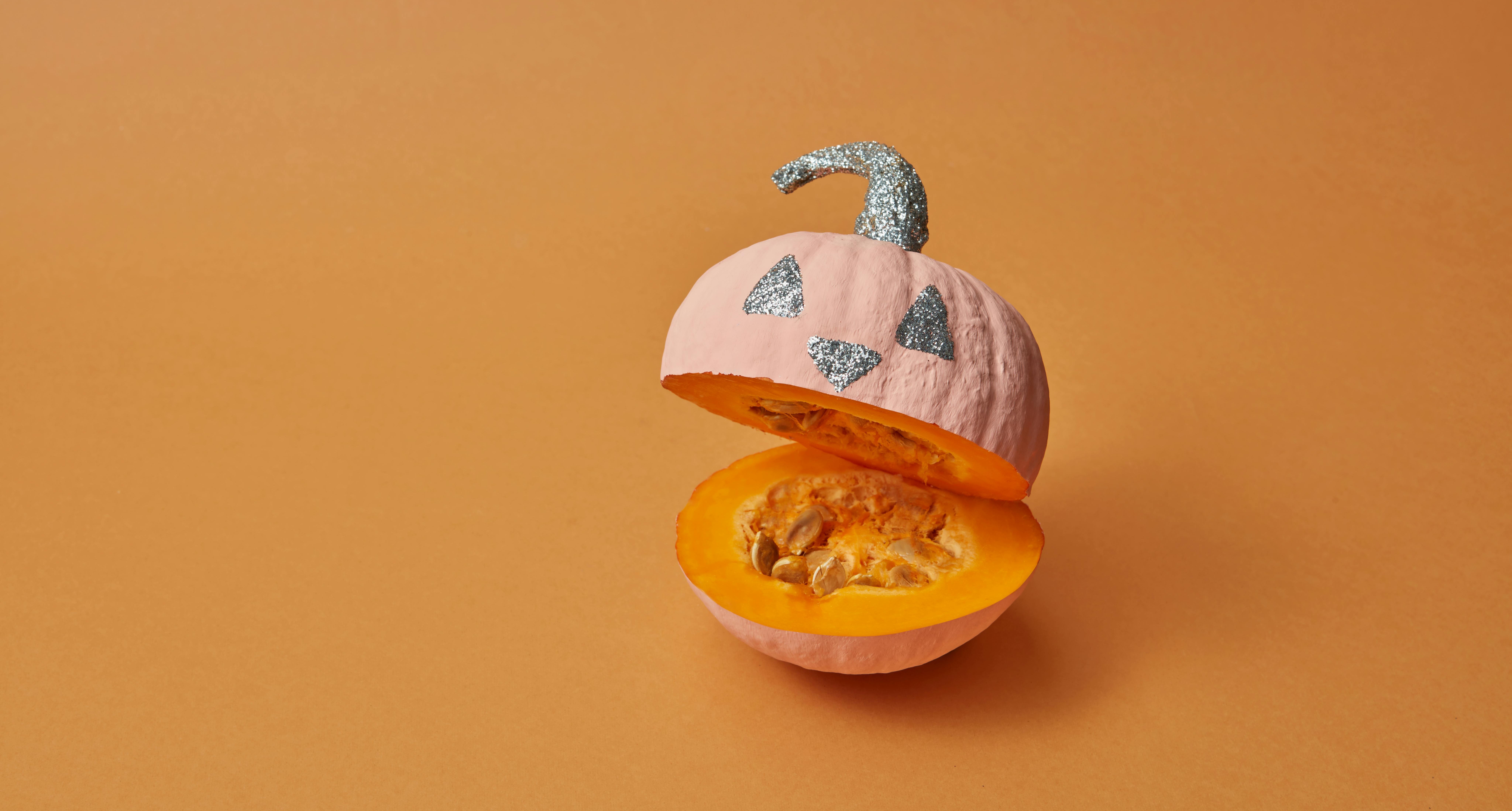
It’s officially Halloween, and as we roll into late October, millions of Americans have begun indulging in their favorite fall traditions: plotting costumes, picking apples, and, of course, carving pumpkins.
Before sharing some ideas for repurposing this year’s jack–o-lantern leftovers, let’s review what is inside a pumpkin. There are stringy pumpkin innards (or guts) and seeds inside of a pumpkin. All parts of a pumpkin can be repurposed in some way. If you’re finding yourself not knowing what to do with gutted pumpkins and their stringy insides after Halloween, pause before throwing them out!
Here are five creative ways to repurpose pumpkin guts instead.
Roast the Pumpkin Seeds
Who doesn’t love pumpkin seeds? Nutritious, delicious, and versatile, roasted pumpkin seeds are a great addition to salads, soups, granola, or simply as a snack. To prepare, separate the seeds from the pulp and rinse. Toss the seeds with oil, salt, and preferred seasoning, and roast for 15-25 minutes at 350 degrees. You can experiment with all manner of flavors: cinnamon sugar, five spice, dill pickle, and whatever other ideas you have.
You can also try our Toasted Pumpkin Seed recipe with soy sauce!
Plant the Seeds
Did you know leftover pumpkin seeds can be used to grow next year’s pumpkins for jack-o-lanterns? Watching pumpkins grow from seeds to fruiting plants can be a great hands-on activity to entertain children through the cold winter months, and teach valuable lessons in responsibility, patience, and food awareness.
Simply separate the seeds from the pulp and let the seeds dry. When they are completely dry, store seeds in an envelope (to avoid moisture developing) until ready to use. Keep in mind that pumpkins usually take 90 to 120 days to fully grow.
When you’re ready, plant shallowly in small cups or egg cartons. Place cup(s) in a sunny windowsill and let the kids take charge of watering and maintaining them. After the last frost, seedlings can be transplanted outside into the garden, and by next Halloween, your family could be carving home-grown pumpkins!
Bake with Pumpkin
Pumpkin insides can be cooked down and blended to create a smooth puree that can be used in many recipes. It’s important to note that pumpkin guts won’t produce a puree identical to the retail product. Nevertheless, your homemade version will be rich in flavor and nutrients, and can be used one-for-one in most pumpkin recipes.
To prepare, separate pulp from seeds and roast the pulp at 350 degrees for 20-25 minutes. Allow to cool, then place in a blender or food processor. Blend until you reach a smooth and even consistency. The puree can be added to muffins, soups, and your other favorite fall treats.

Treat the Dog
Can dogs eat pumpkin guts? Properly prepared and served in moderation, pumpkin can be a healthy treat for canine family members. Dogs can only consume pumpkin fully cooked.
Separate the pulp from the seeds and roast the pulp for 20-25 minutes at 350 degrees. From there, the pumpkin can be served plain or incorporated into homemade dog biscuits.
Compost
By the time November 3 rolls around, your pumpkins probably look pretty rough. However, don’t throw them away quite yet. Pumpkin scraps can be composted in your at-home compost or at a nearby food scraps drop-off.
Alternatively, you can compost any parts of the pumpkin that you aren’t going to repurpose into other things. Minnesotans, find the nearest composting site to you on the Pollution Control Agency’s website.
Let Us Know What You Try!
Whether you’re going to roast pumpkin seeds, try new jack-o-lantern ideas for next year, or feed the family dog a festive treat, now you know what to do with pumpkin insides after Halloween. Let us know which of these ideas you tried in the comments!

Midwest Food Connection teaches food education in classrooms across the Twin Cities and beyond. We help students build relationships with their food, and understand how their food choices connect to their environment and community. Through exploring new foods, healthy cooking, and gardening, kids get excited about learning how to nurture their bodies and the environment.
Want to bring MFC to your classroom? Sign up for lessons or follow us on social media to keep up with what we’re up to!